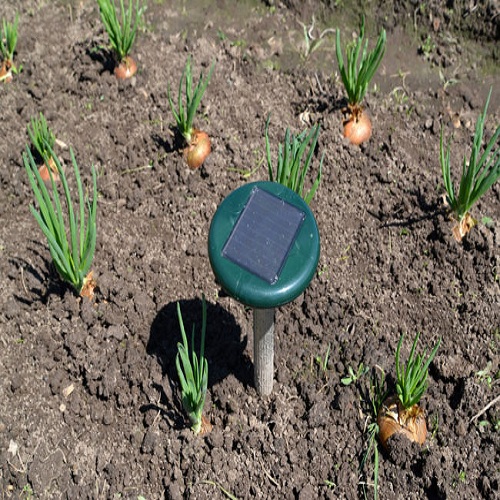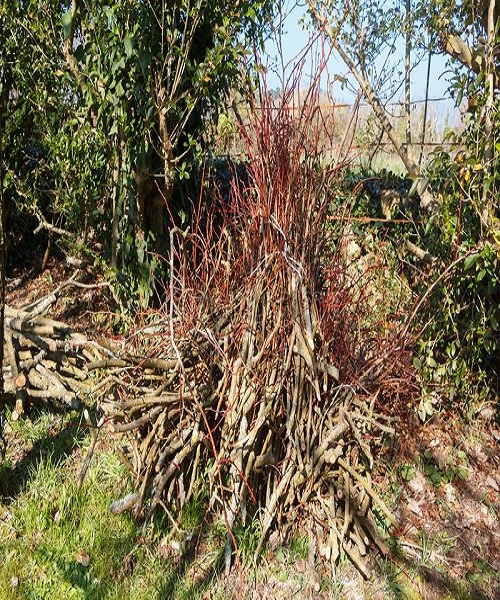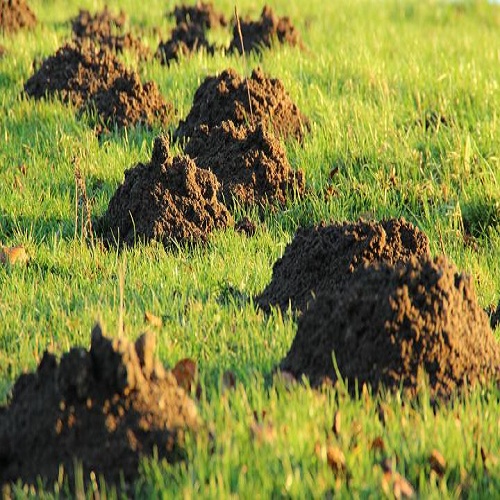Here are some tips on how to get rid of ground moles from your yard without resorting to harsh chemical treatments, It can also help you deal with vole infestations!
There is a lot of damage done to lawns, flowers, and vegetable gardens by ground moles and voles. In addition, commercially available traps and bait can be harmful to pets and children, as well as to adults.
As a result, what can a gardener do? Despite what you might think, there are certain natural methods that can be used to reduce mole and vole numbers. A mole or vole infestation can be minimized or even eliminated with the use of these methods.
Motion & sound deterrents
As with voles, ground moles are averse to ground vibrations and noise. Both are potential predators or hazards.
The greater the success in keeping them away, the more constant and energetic the motion. Pinwheels put around and in beds vibrate the soil, causing movement and noise in the ground. In certain circumstances, a little radio in the garden may be all that is needed.
Making Use of Sonic Solar Repellents
Sonic repellent stakes generate frequencies and waves that deter both moles and voles from the ground. The fact that the stakes are solar-powered is one of their best features. That means that the stakes can be used in any area where moles or voles are a problem.
The best aspect is that installation is as simple as putting them in the ground.
Approximately every half-minute, the stakes send out a pulse of low-frequency energy lasting three seconds. Pests can’t handle the sounds and vibrations of the pulses, therefore they repel pests by penetrating the soil.

In general, each stake will cover an area of 25 to 50 feet around where it is planted, depending on the brand.
Castor Beans, Oil, and Spray
You can also use natural measures to deter moles. Castor oil has one of the most pleasant scents. Castor bean plants are commonly used by gardeners as a deterrent for moles. It’s best to avoid them because they can be an invasive species.
Castor beans are said to cause ground moles to move if they are inserted into the entrance holes. Another common cure is a mixture of onion and garlic stuffed into holes.
Castor oil and water, along with a few drops of liquid detergent, can be used to make a natural repellent for lawns.
A teaspoon of liquid detergent and 10 ounces of castor oil is all you need to get started. Then, apply it to the lawns and beds with a pump sprayer. It is necessary to reapply this solution after rain or irrigation to maintain its effectiveness.
When it comes to voles, it’s important to know…
When dealing with voles, limiting their hiding places is an important first step. To begin, eliminate brush heaps and mow the grass and brush regularly.

Keep wood piles off the ground by stacking them properly and keeping them off the ground. Because they have nowhere to hide, they are easy prey for wildlife, and as a result, they tend to flee to safer enclaves.
Gravel & Fencing

Voles prefer to dig shallow tunnels because they don’t like to go through gravel or rock when they’re digging their tunnels. Because it’s bad for them, in fact! One of the greatest natural methods is to use rock edging buried just below and above ground to surround beds and garden areas.
Voles have a reputation for eating bulbs that have been planted in the ground. When planting bulbs, it is a good idea to fill in the holes around them with pea gravel. As a result, the bulbs are well-drained.
If that doesn’t work, you can use chicken wire or mesh fencing buried 4 to 6 inches below and above ground to keep voles out of your gardens and flowerbeds.
Mesh and chicken wire fencing can also be used to protect newly planted seedlings that are just beginning to sprout on the underside of raised beds.
Natural Predators
Vole populations can only be kept in check by natural predators, such as foxes. Vole-hunting snakes, hawks, and owls are all common in the area. But the best of them all is the common cat.

There are many advantages to using cats to control vole populations, including the fact that they are excellent vole predators.
The Distinction Between Voles And Ground Moles
Knowing what kind of rodent you are up against is the first step in successfully controlling moles, voles, or both. Ground moles and voles are two distinct species, despite the common misconception that they are the same creature.
Ground Moles
Insectivores like moles live for the primary purpose of feeding on insects. Moles burrowing in the ground do not consume plants or the roots of plants. They can, however, cause damage to lawns and plants while searching for food.
In their quest for grubs, larvae, and worms, moles create extensive tunnel systems beneath the earth to travel through the soil. Small, conical dirt mounds can be found in areas with a high concentration of moles. These are their entrance and exit points.

How to Detect Vole-Inflicted Damage
Voles, on the other hand, are herbivores and get their nutrition primarily from plants. They’re often mistaken for a mouse or shrew, but they’re actually plant-eating arachnids. In terms of damage to your landscape, voles are the most destructive of the two.
Voles consume a wide variety of plant parts, including bulbs, roots, grass, and leaves. Even the bark of trees and plants has been eaten by them.
They are drawn to places that offer a good deal of cover for their nests. It is because of this that they prefer to reside in or near regions with a lot of brush piles, wood piles, and grassy areas.

